Area and perimeter worksheets provide a structured approach to understanding geometric concepts․ Designed for various grade levels, they offer exercises in calculating perimeters and areas of shapes, enhancing problem-solving and mathematical proficiency through practical examples and word problems․
1․1 Definition of Area and Perimeter
The perimeter of a shape is the total distance around its edges, calculated by adding the lengths of all sides․ For example, the perimeter of a square is 4 times the length of one side․ The area, on the other hand, measures the space inside a shape․ For a square, the area is the side length squared․ Both concepts are fundamental in geometry, with practical applications in real-world scenarios like construction and design․ These definitions form the basis for solving problems in area and perimeter worksheets, helping students grasp foundational geometric principles through clear formulas and examples․
1․2 Importance of Worksheets in Learning Geometry
Worksheets are essential tools for mastering geometry concepts like area and perimeter․ They provide structured exercises that help students visualize and apply formulas to various shapes; By practicing with worksheets, learners develop problem-solving skills and gain confidence in calculating perimeters and areas accurately․ These resources are particularly valuable for teachers and parents, offering a practical way to reinforce lessons and track progress․ Worksheets also cater to different learning levels, ensuring that students can gradually build proficiency from basic shapes to complex figures․ Their organized format makes them ideal for both classroom use and independent study, fostering a deeper understanding of geometric principles․
1․3 Historical Context of Area and Perimeter Problems
The concept of area and perimeter has roots in ancient civilizations, where early mathematicians developed methods to measure land and construct buildings․ Egyptians and Babylonians used these principles for agriculture and architecture, while Greeks later formalized them․ The Pythagorean theorem and Euclid’s works laid the foundation for geometric calculations․ Over centuries, these ideas evolved, becoming integral to education․ Worksheets today reflect this historical journey, providing structured exercises that trace back to practical applications in ancient times․ Understanding this context highlights the enduring relevance of area and perimeter in mathematics and real-world problem-solving․

Benefits of Using Area and Perimeter Worksheets
Area and perimeter worksheets enhance problem-solving skills, improve mathematical accuracy, and build a strong foundation for advanced geometry․ They cater to different learning styles, offering practical experience for students of all levels․
2․1 Enhancing Problem-Solving Skills
Area and perimeter worksheets play a vital role in enhancing problem-solving skills by providing structured exercises that challenge students to apply geometric concepts; Through repeated practice, students develop the ability to break down problems, visualize shapes, and apply formulas effectively․ Worksheets often include a variety of exercises, from calculating perimeters of squares and rectangles to solving word problems involving real-world scenarios․ This hands-on approach fosters critical thinking and logical reasoning, enabling students to tackle complex challenges with confidence․ By mastering these foundational skills, learners build a strong mathematical foundation and improve their overall problem-solving abilities․
2․2 Improving Mathematical Accuracy
Area and perimeter worksheets are instrumental in improving mathematical accuracy by providing repetitive, focused exercises that reinforce formula application and precise calculations․ Regular practice with these worksheets helps students master fundamental concepts, such as distinguishing between area and perimeter, ensuring accurate unit conversions, and applying correct formulas for various shapes․ The structured format of worksheets minimizes errors by guiding students through step-by-step problem-solving, while answer keys offer immediate feedback to correct mistakes․ Over time, this consistent practice enhances computational precision, builds confidence, and establishes a strong foundation for more complex mathematical challenges in geometry and beyond․
2․3 Building a Strong Foundation for Advanced Geometry
Mastering area and perimeter through worksheets lays a crucial foundation for advanced geometry․ These exercises introduce students to spatial relationships, formula application, and problem-solving strategies․ By calculating perimeters and areas of various shapes, students develop the ability to visualize and analyze geometric figures, essential for understanding complex concepts like volume, surface area, and trigonometry․ Worksheets also familiarize students with mathematical reasoning and precision, skills that are vital for tackling higher-level geometry problems․ This foundational knowledge enables students to approach advanced topics with confidence, preparing them for real-world applications in fields such as engineering, architecture, and design․

How to Create Effective Area and Perimeter Worksheets
Effective worksheets should be tailored to the student’s age and skill level, incorporating clear instructions, visual aids, and a mix of basic and word problems for comprehensive learning․
3․1 Identifying Target Age Group and Skill Level
Identifying the target age group and skill level is crucial when creating area and perimeter worksheets․ For younger students, such as those in grades 5 and 6, basic problems with clear diagrams and simple shapes like squares and rectangles are ideal․ These exercises help build foundational skills and introduce concepts gradually․ For older students, such as those in grades 7 and 8, worksheets can include more complex shapes and word problems that require application of formulas and critical thinking․ Tailoring the difficulty and content to the student’s ability ensures effective learning and engagement․ This approach also helps in progressing their skills systematically․
3․2 Incorporating Visual Aids and Diagrams
Incorporating visual aids and diagrams in area and perimeter worksheets enhances understanding and engagement․ Clear illustrations of squares, rectangles, triangles, and irregular shapes help students visualize the problems․ Diagrams with labeled sides and units guide learners in applying formulas correctly․ For word problems, visual representations of real-world scenarios, such as fencing a garden or designing a room, make the tasks relatable․ Interactive elements, like fillable measurement scales or grids, encourage hands-on practice․ By integrating these tools, worksheets become more effective in teaching spatial awareness and mathematical application, catering to different learning styles and improving retention of key concepts․
3․3 Balancing Basic and Word Problems
Balancing basic and word problems in area and perimeter worksheets ensures comprehensive skill development․ Basic problems focus on straightforward calculations, reinforcing formula application and accuracy․ Word problems, such as determining the fence needed for a garden or carpeting a room, connect abstract concepts to real-life scenarios․ This blend helps students transition from foundational knowledge to practical application․ Worksheets often start with simple calculations before introducing more complex, contextual questions․ This gradual approach builds confidence and problem-solving abilities, preparing learners for advanced geometry and real-world challenges․ Mixing problem types keeps practice engaging and relevant, catering to diverse learning needs and promoting deeper understanding․
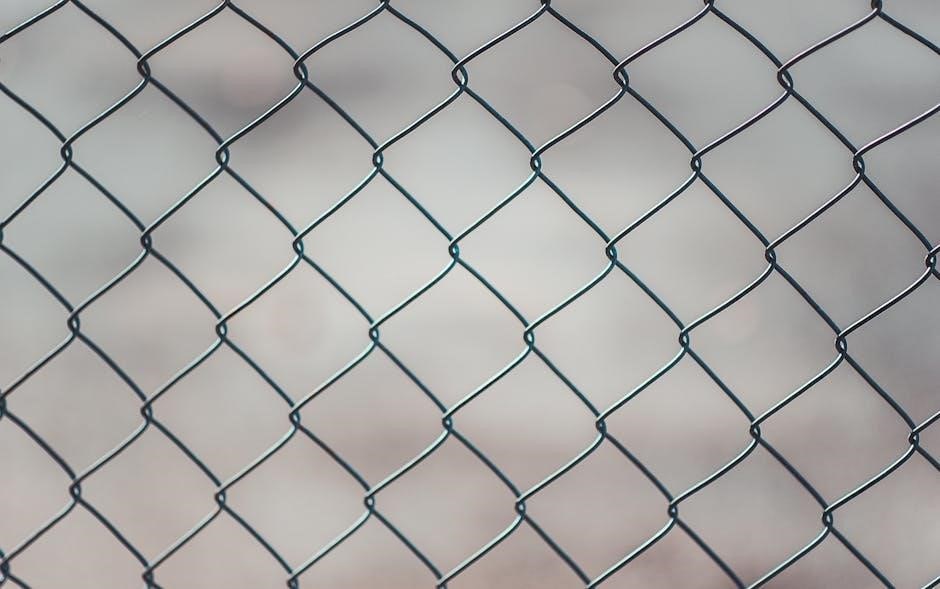
Common Types of Problems in Worksheets
Worksheets often include calculating perimeters of squares and rectangles, finding areas of triangles, and solving word problems involving real-world applications of area and perimeter concepts․
4․1 Calculating Perimeter of Squares and Rectangles
Worksheets frequently feature problems where students calculate the perimeter of squares and rectangles․ For squares, the perimeter is four times the side length, while rectangles require adding twice the length and twice the width․ These exercises often include various units, such as centimeters, meters, and inches, to ensure understanding of unit conversion․ Some problems involve visual diagrams, where students measure or calculate side lengths before applying formulas․ Real-world applications, like fencing a garden or framing a picture, make these problems relatable and practical, helping students grasp the importance of perimeter in everyday scenarios․
4․2 Finding Area of Triangles and Other Polygons
Worksheets often include exercises for calculating the area of triangles and various polygons․ For triangles, students use the formula: area equals half the base multiplied by height․ Other polygons, like rectangles and squares, involve simpler calculations, while irregular shapes require breaking them into known figures․ Word problems are common, such as determining the area of a garden or room․ Visual aids and diagrams are frequently provided to help students visualize the shapes and apply formulas accurately․ These exercises aim to build a strong foundation in spatial reasoning and mathematical accuracy, essential for more complex geometry topics in later years․
4․3 Solving Word Problems Involving Area and Perimeter
Word problems in worksheets challenge students to apply area and perimeter concepts to real-world scenarios․ Examples include calculating fencing needed for a garden or determining the area of a room for flooring․ These problems often require interpreting descriptions, identifying relevant measurements, and selecting appropriate formulas․ They may involve multiple steps, such as converting units or calculating missing dimensions․ Word problems enhance critical thinking and practical application skills, preparing students for real-life situations where geometry is essential․ Worksheets typically include a mix of straightforward and complex problems to cater to different skill levels and ensure comprehensive understanding of area and perimeter applications․
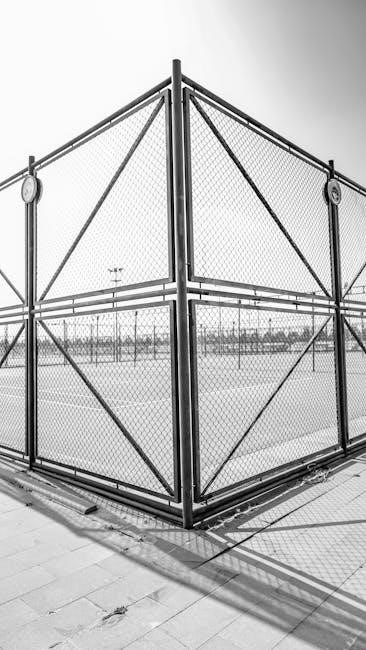
Advanced Topics in Area and Perimeter Worksheets
Advanced worksheets explore complex shapes, irregular figures, and real-world applications, challenging students to apply formulas and problem-solving skills to diverse geometric scenarios and practical situations effectively;
5․1 Calculating Perimeter and Area of Irregular Shapes
Calculating the perimeter and area of irregular shapes introduces complexity, requiring students to break down figures into simpler components․ These worksheets often involve shapes with uneven sides or angles, challenging spatial reasoning․ By dividing irregular shapes into triangles, rectangles, or other familiar forms, students can apply basic formulas to find perimeter and area․ Grid paper is frequently used to enhance accuracy․ Such exercises are essential for developing advanced problem-solving skills and preparing students for real-world applications, such as calculating materials needed for flooring or fencing․ These problems encourage critical thinking and precise measurement techniques, fostering a deeper understanding of geometric principles in practical scenarios․
5․2 Applying Formulas for Complex Geometric Figures
Applying formulas for complex geometric figures challenges students to master advanced mathematical concepts․ Worksheets often include shapes like triangles, parallelograms, and circles, requiring the use of specific formulas for area and perimeter․ For instance, the area of a triangle is calculated using base and height, while circles involve radius or diameter measurements․ These exercises help students understand how different formulas apply to various shapes and scenarios․ By practicing with complex figures, learners develop critical thinking and problem-solving skills, essential for tackling real-world math challenges․ These worksheets also reinforce the importance of accurate measurements and formula application in achieving precise results․
5․3 Using Real-World Scenarios to Practice Skills
Using real-world scenarios in area and perimeter worksheets helps students connect mathematical concepts to practical applications․ For example, calculating the perimeter of a fence for a garden or determining the area of a room for flooring․ These scenarios make learning engaging and relevant, allowing students to visualize how formulas apply to everyday situations․ Worksheets often include problems like measuring land for agriculture or designing spaces, encouraging critical thinking and problem-solving․ By practicing with real-world contexts, students develop a deeper understanding of how area and perimeter are essential in fields like construction, interior design, and landscaping, preparing them for future challenges․
Tools and Resources for Creating Worksheets
Utilize software like Adobe Acrobat for designing PDF worksheets, explore free printable resources on websites, and leverage apps to generate custom area and perimeter problems efficiently․
6․1 Best Software for Designing PDF Worksheets
Adobe Acrobat is ideal for creating and editing PDF worksheets, offering advanced features like form creation and security․ Canva provides templates and a user-friendly interface for designing visually appealing PDFs․ Google Docs allows collaborative worksheet creation, which can then be converted to PDF․ Scribus is a free, open-source desktop publishing tool with robust design capabilities․ PDFEscape and Foxit PhantomPDF are excellent for editing and annotating existing PDFs․ These tools cater to different needs, ensuring high-quality area and perimeter worksheets for educational purposes․ They simplify the process of designing engaging and professional-looking resources for students and educators alike․
6․2 Websites Offering Free Printable Worksheets
Websites like Education․com and MathWorksheets4Kids․com provide a wide range of free printable area and perimeter worksheets in PDF format․ These resources cater to various grade levels, from basic to advanced problems․ Education․com offers interactive and visually appealing worksheets, while MathWorksheets4Kids․com includes customizable templates․ Other popular sites, such as TeacherVision and Worksheet Genius, offer tailored exercises for specific skills like calculating perimeters of irregular shapes or solving word problems․ These platforms are invaluable for educators and parents seeking high-quality, accessible resources to help students master geometry concepts effectively․ They simplify the process of finding and printing worksheets for classroom or home use․
6․3 Apps for Generating Custom Area and Perimeter Problems
Apps like “Measure Mobile” and “Math Games” offer tools to create custom area and perimeter problems․ These apps allow educators to design exercises tailored to specific skill levels, with features for adjusting difficulty and focusing on shapes like rectangles or triangles․ They often include interactive elements, enabling students to visualize and solve problems digitally․ Some apps provide immediate feedback, enhancing learning efficiency․ These digital resources complement traditional worksheets, offering flexibility for modern classrooms․ They are particularly useful for engaging tech-savvy students and providing real-time practice opportunities, making geometry concepts more accessible and fun to learn․

Tips for Effective Practice with Worksheets
Set clear goals, use timers to enhance speed, and regularly review mistakes to avoid repeated errors, ensuring efficient and productive practice with area and perimeter worksheets․
7․1 Setting Goals for Completing Worksheets
Setting clear, achievable goals when completing area and perimeter worksheets helps students stay focused and track their progress․ Start by identifying specific skills to master, such as calculating perimeters of irregular shapes or solving word problems․ Break down larger worksheets into smaller sections to avoid overwhelm․ Establishing a timeline for completion ensures consistent practice and builds confidence․ Celebrate milestones, like mastering a particular problem type, to maintain motivation․ Regularly review and adjust goals based on performance to ensure steady improvement․ By setting structured objectives, learners can efficiently enhance their understanding of area and perimeter concepts and develop long-term problem-solving skills․
7․2 Using Timers to Improve Speed and Accuracy
Integrating timers into practice with area and perimeter worksheets can significantly enhance both speed and accuracy․ Set a timer for specific intervals, challenging students to complete a set number of problems within the time frame․ This method trains the brain to work efficiently, reducing the likelihood of careless errors․ Start with longer durations for complex problems and gradually decrease the time as proficiency increases․ Timed exercises simulate test conditions, helping students build confidence and composure under pressure․ Regular timing drills foster a sense of urgency, encouraging focused effort and precision, which are crucial for mastering geometric calculations and achieving overall academic success․
7․3 Reviewing Mistakes to Avoid Repeated Errors
Reviewing mistakes is a critical step in mastering area and perimeter calculations․ After completing worksheets, students should thoroughly analyze incorrect answers to identify common errors․ This process helps in understanding where they went wrong, whether it was a formula misapplication or a calculation oversight․ By addressing these errors, students can reinforce their understanding of key concepts and develop strategies to avoid similar mistakes in the future․ Regular review sessions foster a deeper grasp of geometric principles, leading to improved performance and confidence in tackling more complex problems in area and perimeter calculations․

Case Studies and Real-World Applications
Case studies demonstrate practical uses of area and perimeter in real-life scenarios, such as fencing gardens or designing interiors, making geometric concepts more tangible and applicable․
8․1 Using Perimeter in Fence Construction
Fence construction relies heavily on perimeter calculations to determine material needs․ For example, a rectangular garden with a length of 60m and a width of 30m has a perimeter of 180m, requiring 180m of fencing material․ Understanding perimeter aids in budgeting and planning, ensuring accurate measurements and cost efficiency․ Worksheets help students practice such real-world applications, enhancing their ability to solve practical problems involving perimeters․ This skill is essential for various professions, including landscaping and construction, where precise measurements are critical for successful project execution․
8․2 Applying Area Calculations in Interior Design
Area calculations are fundamental in interior design for measuring spaces, selecting furniture, and planning layouts․ For instance, calculating the area of a room helps determine the amount of flooring or wallpaper needed․ Worksheets provide practical exercises, such as finding the area of rectangular spaces or irregular shapes, which are common in interior design projects․ Students learn to apply formulas to real-world scenarios, ensuring accurate measurements and efficient use of materials․ These skills are invaluable for professionals, enabling them to create functional and aesthetically pleasing environments while adhering to budget constraints․
8․3 Solving Perimeter and Area Problems in Agriculture
In agriculture, calculating perimeter and area is essential for tasks like fencing fields, measuring irrigation areas, and determining crop yields․ Farmers often need to calculate the perimeter of rectangular fields to estimate fencing materials or the area for planting crops․ Worksheets provide practical exercises, such as determining the area of a rectangular field or calculating the perimeter of a fence․ These skills help farmers optimize land use, reduce costs, and increase efficiency․ By practicing with real-world problems, individuals develop the ability to apply geometric concepts effectively, making them invaluable for agricultural planning and management․
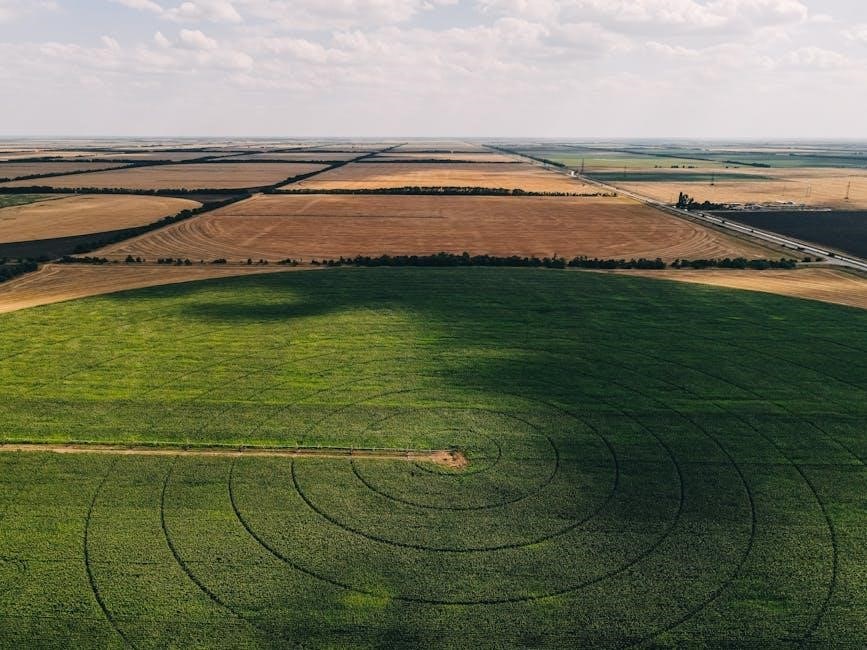
Common Mistakes to Avoid
Common errors include forgetting unit conversions, misapplying formulas for different shapes, and overlooking precise measurements, leading to incorrect area and perimeter calculations․
9․1 Forgetting to Convert Units
Forgetting to convert units is a common mistake that can lead to incorrect area and perimeter calculations․ For instance, mixing meters and centimeters without conversion results in inaccurate measurements․ Always ensure consistency in units before solving problems․ For example, if a rectangle’s length is given in meters and width in centimeters, convert both to the same unit․ This oversight can significantly affect results, especially in word problems involving real-world scenarios like fencing or construction․ Double-checking units is a simple yet crucial step to avoid errors and ensure precise outcomes in area and perimeter calculations․
9․2 Misapplying Formulas for Different Shapes
Misapplying formulas for different shapes is a frequent error in area and perimeter calculations․ For example, using the area formula for a rectangle (length × width) instead of a triangle (½ × base × height) leads to incorrect results․ This mistake often occurs due to confusion between similar-sounding formulas or rushing through problems․ To avoid this, always identify the shape type first and verify the appropriate formula․ Practicing with worksheets that highlight formula differences can help reinforce correct applications․ Consistency and attention to detail are key to mastering these geometric concepts and ensuring accurate solutions in area and perimeter problems․
9․3 Overlooking the Importance of Accurate Measurements
Accurate measurements are crucial for correct area and perimeter calculations․ Overlooking this step can lead to errors, especially when converting units or miscounting grid units on diagrams․ Students often rush through measurements, assuming they are straightforward․ However, small mistakes, such as miscalculating the length of a side or miscounting squares on a grid, can result in incorrect answers․ To avoid this, emphasize the importance of double-checking measurements and using precise tools like rulers or digital measurement software․ Worksheets that include visual aids can also help students verify their measurements, ensuring accuracy and improving overall understanding of geometric concepts․
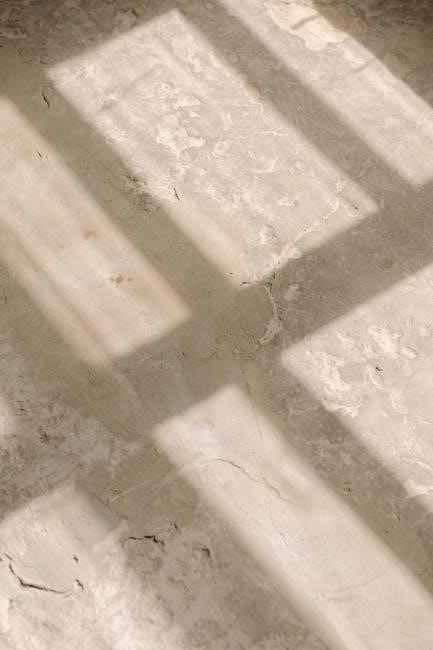
10․worksheet
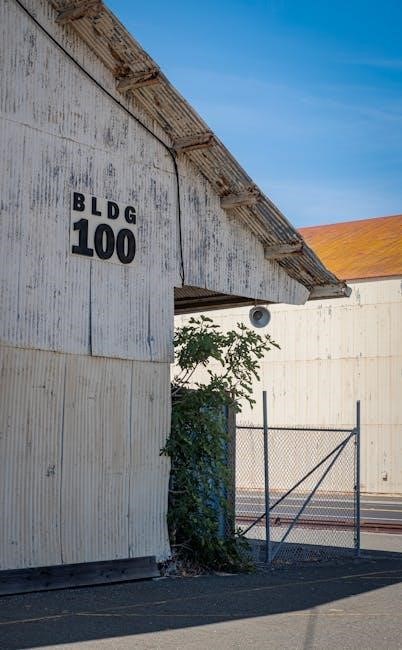
Worksheet
Explore printable area and perimeter worksheets for various grades, including STD 6, Grade 5 and 6, and Class 7 and 8, designed to cater to different educational needs․
10․1 STD 6 Worksheet for Basic Area and Perimeter
This worksheet focuses on fundamental concepts for 6th-grade students, offering 1-mark questions to assess understanding․ Problems include finding the perimeter of squares and rectangles with given side lengths, such as a square with a 2․5 cm side or a rectangle with a 2m length and 1․5m breadth․ It also introduces shapes formed by joining squares and basic word problems․ The worksheet incorporates diagrams to visualize shapes, aiding in calculating perimeters and areas accurately․ Designed to reinforce basic geometry skills, it serves as a foundational tool for students to master area and perimeter calculations before progressing to more complex problems․
10․2 Grade 5 and 6 Worksheets for Advanced Problems
These worksheets are designed for students in Grades 5 and 6 to tackle more challenging area and perimeter problems․ They include exercises that combine basic concepts with word problems, such as calculating the perimeter of a rectangular field or determining the area of a room for interior design․ Students are also introduced to irregular shapes and mixed operations, requiring them to apply formulas for triangles, polygons, and composite figures․ The worksheets encourage critical thinking and precision, helping students transition from foundational skills to more complex geometric applications․ They are ideal for reinforcing learning and preparing students for higher-level math challenges․
10․3 Printable Worksheets for Class 7 and 8
Printable worksheets for Class 7 and 8 are designed to challenge students with advanced area and perimeter problems․ These worksheets focus on irregular shapes, mixed operations, and real-world applications, such as calculating the perimeter of agricultural fields or the area of complex polygons․ Students are encouraged to apply formulas to various geometric figures, including triangles, parallelograms, and composite shapes․ Word problems are included to enhance critical thinking and practical problem-solving skills․ These resources are ideal for reinforcing concepts and preparing students for higher-level mathematics․ They provide a comprehensive approach to mastering area and perimeter calculations, ensuring a strong foundation for future studies․
Area and perimeter worksheets are essential tools for mastering geometric concepts, offering structured practice and skill reinforcement․ They pave the way for advanced math and real-world applications․
11․1 Summary of Key Concepts
Area and perimeter worksheets simplify understanding of geometric measurements․ The perimeter is the total distance around a shape, while the area is the space inside it․ These concepts are fundamental for solving real-world problems, such as fencing a garden or designing a room․ Worksheets provide structured practice, enhancing problem-solving skills and mathematical accuracy․ They cater to different skill levels, from basic calculations for squares and rectangles to complex shapes and word problems․ Regular practice with these resources builds a strong foundation for advanced geometry and practical applications, making them indispensable for students and educators alike․ Consistent use ensures mastery and confidence in geometric calculations․
11․2 Encouraging Continuous Practice
Regular practice with area and perimeter worksheets is crucial for mastering geometric concepts․ Worksheets offer a variety of problems, from basic calculations to complex word problems, ensuring comprehensive understanding․ Setting specific goals for completing worksheets helps maintain consistency and motivation․ Using timers can enhance speed and accuracy, while reviewing mistakes fosters better learning․ These resources are ideal for students of all skill levels, providing a structured way to reinforce lessons and build confidence․ By incorporating these tools into daily routines, students can develop a strong foundation in geometry, essential for advanced studies and real-world applications․ Continuous practice ensures long-term retention and skill improvement․
11․3 The Future of Learning with Digital Worksheets
Digital worksheets are transforming the way students learn area and perimeter concepts․ With interactive features and instant feedback, they make practice engaging and efficient․ Apps and online platforms provide customizable worksheets, catering to individual learning needs․ Digital tools also reduce paper waste, offering a sustainable solution for education․ As technology advances, these resources will continue to play a pivotal role in making learning accessible and dynamic․ The shift towards digital worksheets ensures that students can practice anytime, anywhere, fostering a flexible and modern approach to mastering geometry skills․ This trend is expected to grow, enhancing educational outcomes for future generations․